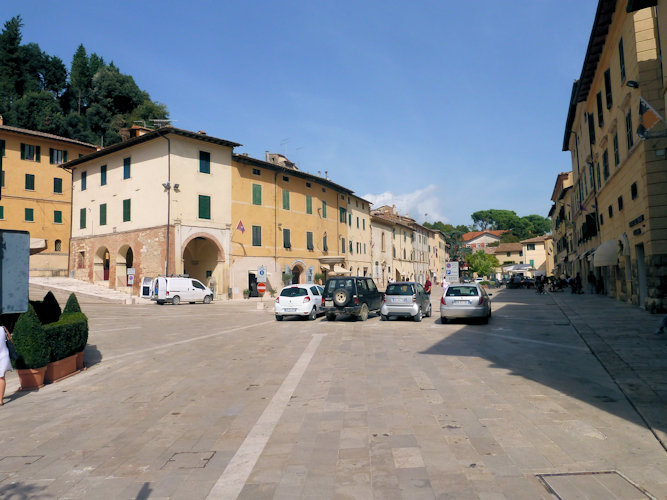

- The Piazza Garibaldi, laid out in the 16th Century, in the beautifully preserved medieval village of Cetona
- La Piazza Garibaldi, aménagée au 16e siècle, dans le village médiéval magnifiquement préservé de Cetona
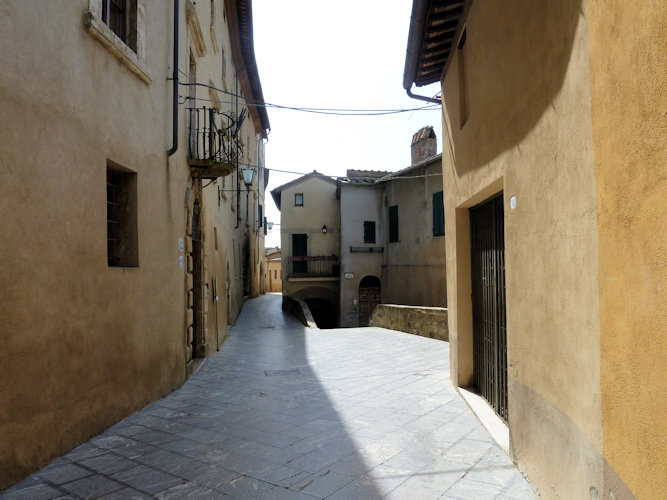

- Cetona surrounds a hill where the Rocca Fortress, containing a square tower (900 AD) and an
inner fortress wall, is located
- Cetona entoure une colline où se trouve la Forteresse de Rocca, contenant une tour carrée
(900 ap. J.-C.) et un mur intérieur fortifié
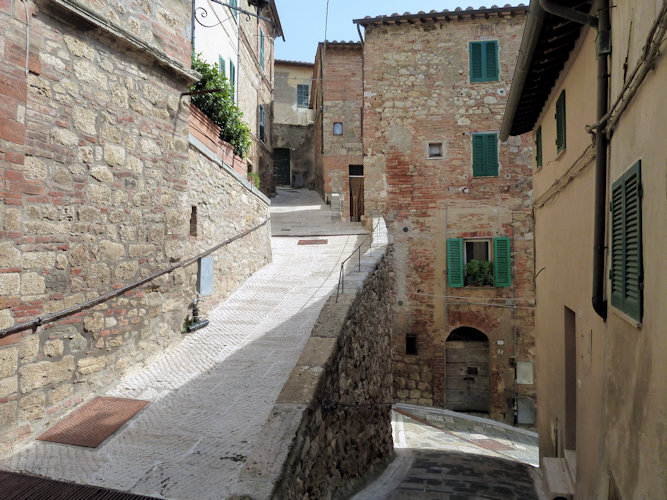

- The well-preserved medieval town of Cetona is located in the Val di Chiana in the extreme
south-east of Tuscany, Italy, in the province of Sienna
- La ville médiévale bien préservée de Cetona est située dans le Val di Chiana dans l'extrême
sud-est de la Toscane, en Italie, dans la province de Sienne
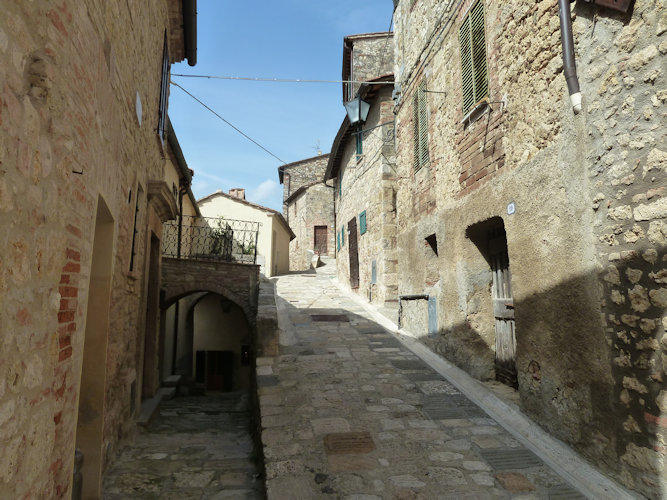

- A typical small street of Cetona
- Une petite rue typique de Cetona
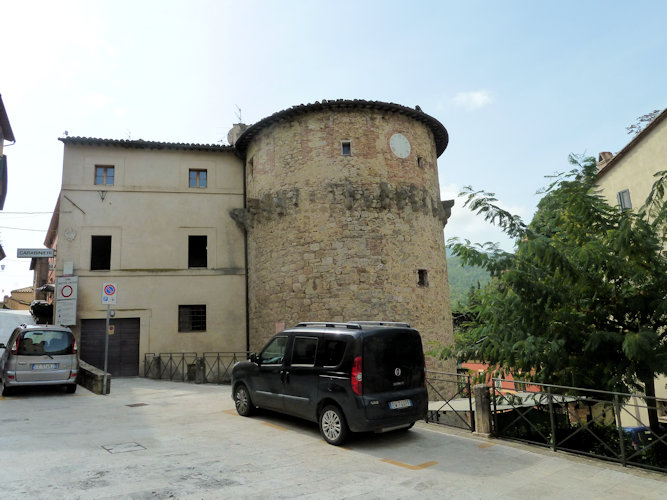

- This large round tower in Cetona, which was probably built in the mid-16th century, is the most
important trace of the third set of walls
- Cette grosse tour ronde à Cetona, qui a été probablement construite au milieu du 16e siècle, est le
vestige la plus important de la troisième série de murs
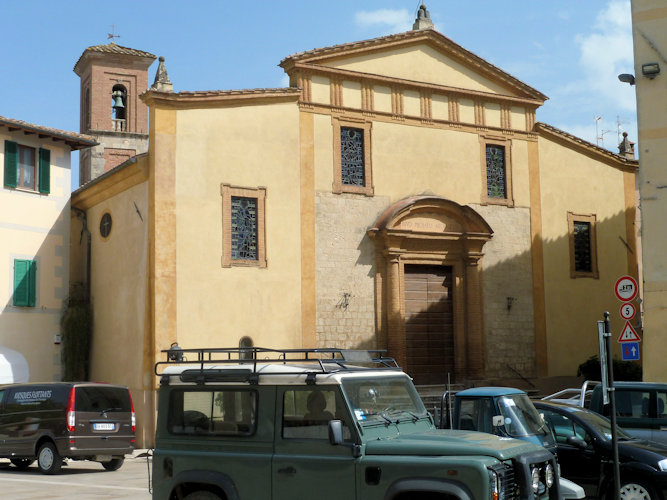

- The Church San Michele Arcangelo on Piazza Garibaldi in Cetona was built in 1155
- L'église San Michele Arcangelo sur la Piazza Garibaldi à Cetona a été construite en 1155
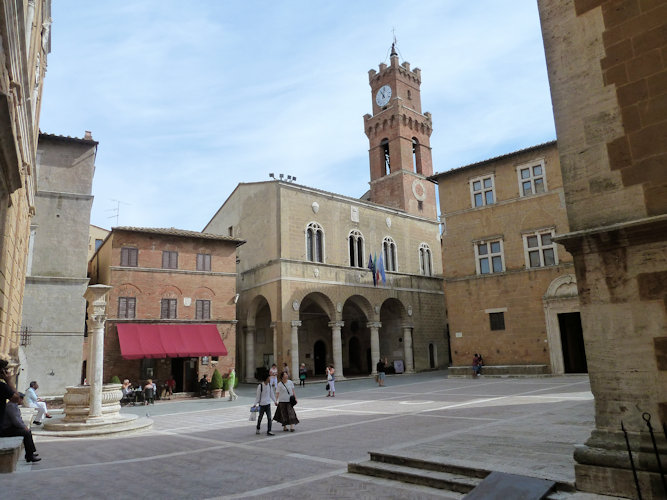

- The Piazza Pio II in Pienza, Tuscany. Corsignano was the birthplace (1405) of Enea Silvio
Piccolomini, who later became Pope Pius II. Once he became Pope, Piccolomini had the entire
village rebuilt as an ideal Renaissance town and renamed it Pienza.
- La Piazza Pio II de Pienza, Toscane. Corsignano était le lieu de naissance (1405) d'Enea Silvio
Piccolomini, qui devint plus tard le pape Pie II. Une fois devenu pape, Piccolomini a reconstruit
tout le village comme une ville idéale de la Renaissance et l'a rebaptisée Pienza.

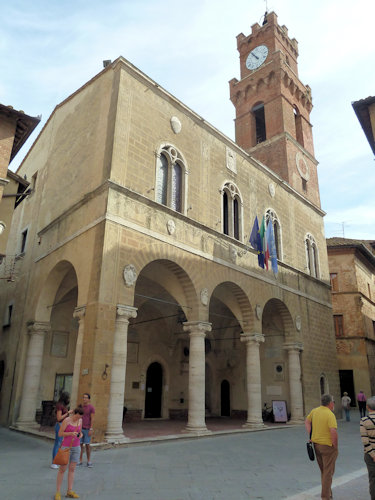

- The principal building on Piazza Pio II is the town hall,
once the Palazzo dei Priori (late 13th, early 14th century)
but now the Palazzo Comunale
- Le bâtiment principal sur la Piazza Pio II est l'hôtel de
ville, auparavant le Palazzo dei Priori (fin du 13e, début
du 14e siècle), mais maintenant le Palazzo Comunale
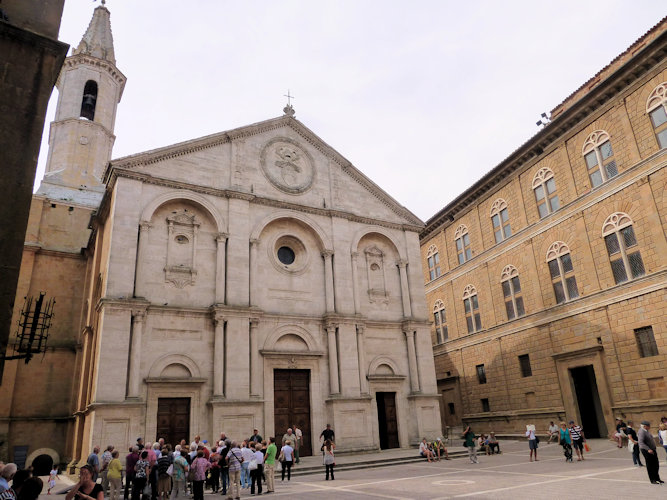

- The Cathedral of Santa Maria Assunta (also known as the Pienza Duomo), built in 1459, represents
a rare and delicate balance of both Gothic and Renaissance forms
- La cathédrale de Santa Maria Assunta (également connu comme la Duomo de Pienza), construite en
1459, représente un équilibre rare et délicat des deux styles gothique et renaissance

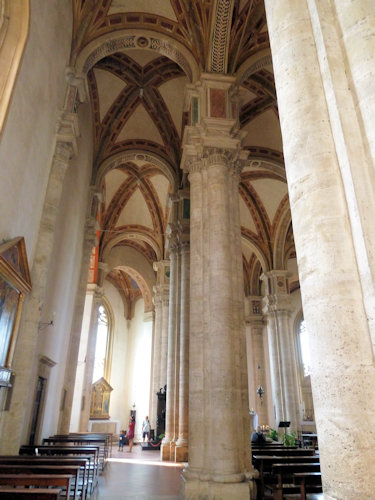

- The interior of the Duomo, in a latin cross shape divided
into one nave and two aisles, all of the same height
- L'intérieur de la cathédrale, en forme de croix latine divisé en
une nef centrale et deux nefs latérales, toutes de la même hauteur

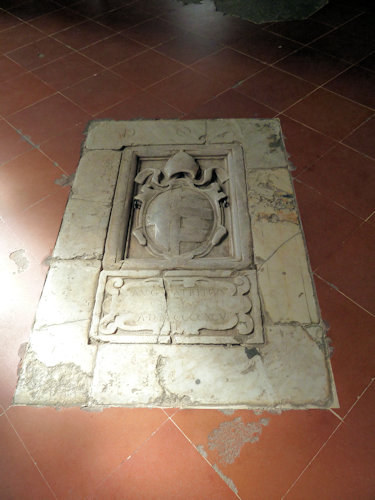

- The papal coats of arms in the floor of the Duomo
- Les armoiries papales dans le plancher de la cathédrale

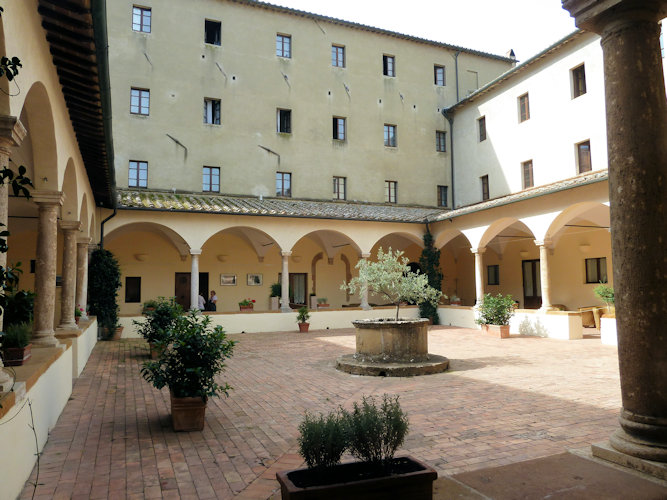

- The square courtyard of the Palazzo Piccolomini, surrounded by a portico. It was built from
1459 on the initiative of Enea Piccolomini, the future Pope Pius II
- La cour carrée du Palazzo Piccolomini, entouré d'un portique. Il fut construit à partir de 1459
à l'initiative de Enea Piccolomini, futur pape Pie II